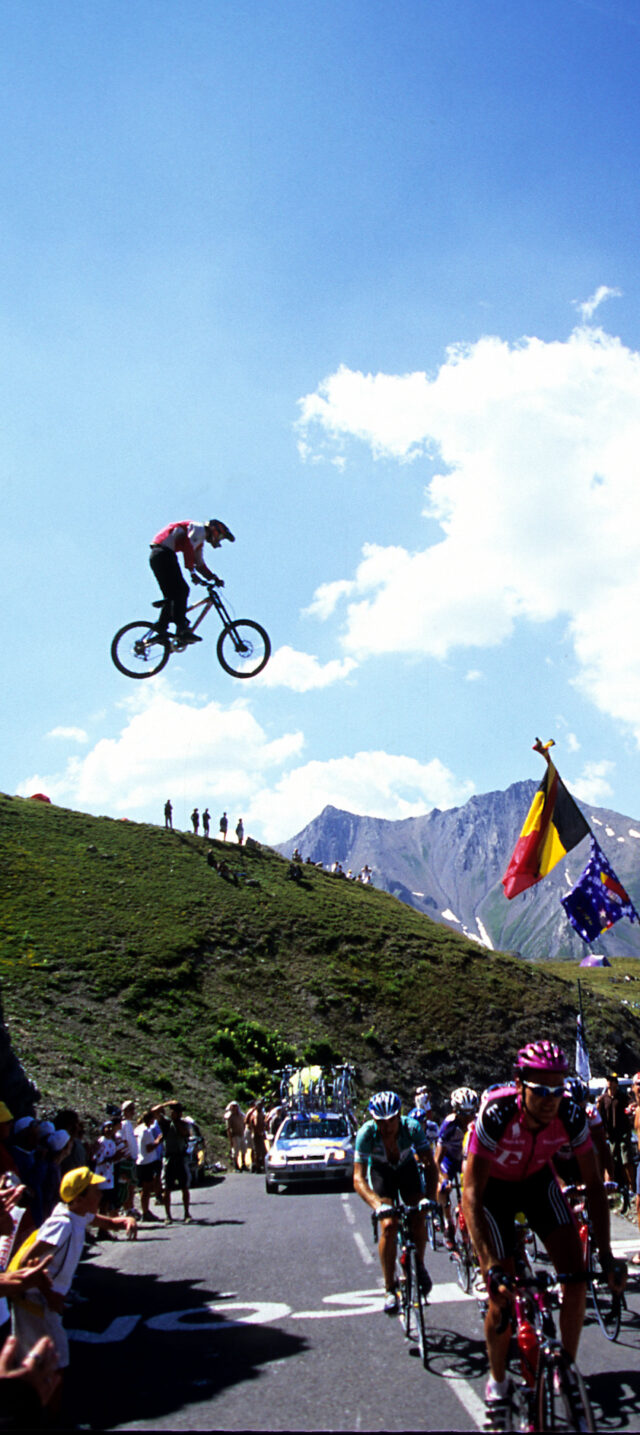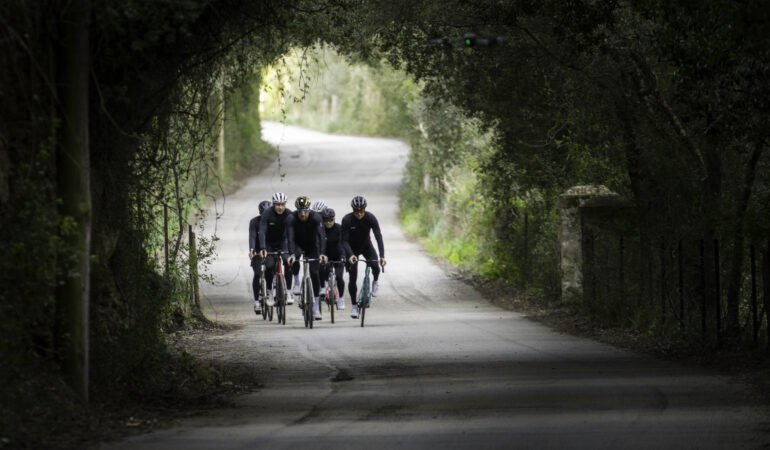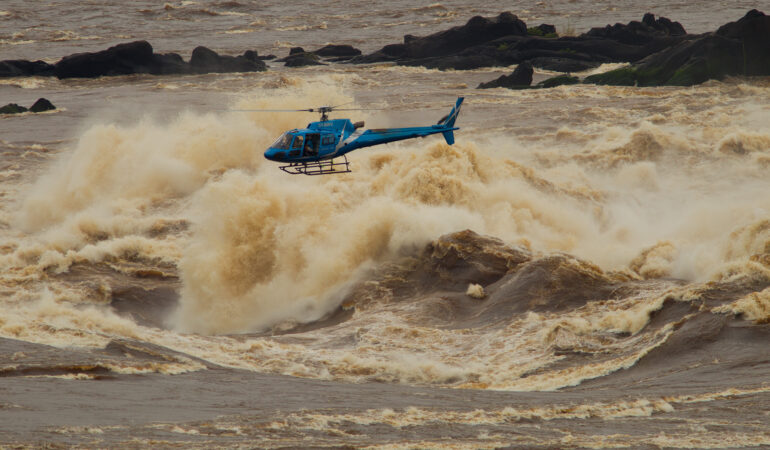I started shooting mountain biking not long after I started shooting skiing in the late 1980s. Back in those days you could make a living on stock photography and editorial work. I landed some of the first covers of Mountain Bike Action—riders on rigid bikes with no helmets. And by the early 2000s, when Powder magazine’s sister publication Bike was launched, I was already pretty established. For many years, I’ve spent a good part of the summer in France with my wife Veronique. I was on a shoot over there with Richie Schley and Wade Simmons and we discovered an incredible freeride zone in the south of France that looked like southern Utah. This led to many future shoots in the area with some of the top French mountain bikers and publication in French magazines like the freeride title Big Bike.
In the Field: How They Got The Shot | Freeride Le Tour
Photographer Scott Markewitz on how he captured one the Tour de France's most startling images.
Jumping The Tour de France
Twenty years after capturing one of the most impactful cycling images ever, we caught up with the photographer Scott Markewitz to find out how he got that shot. Here’s how it went down, in his words.
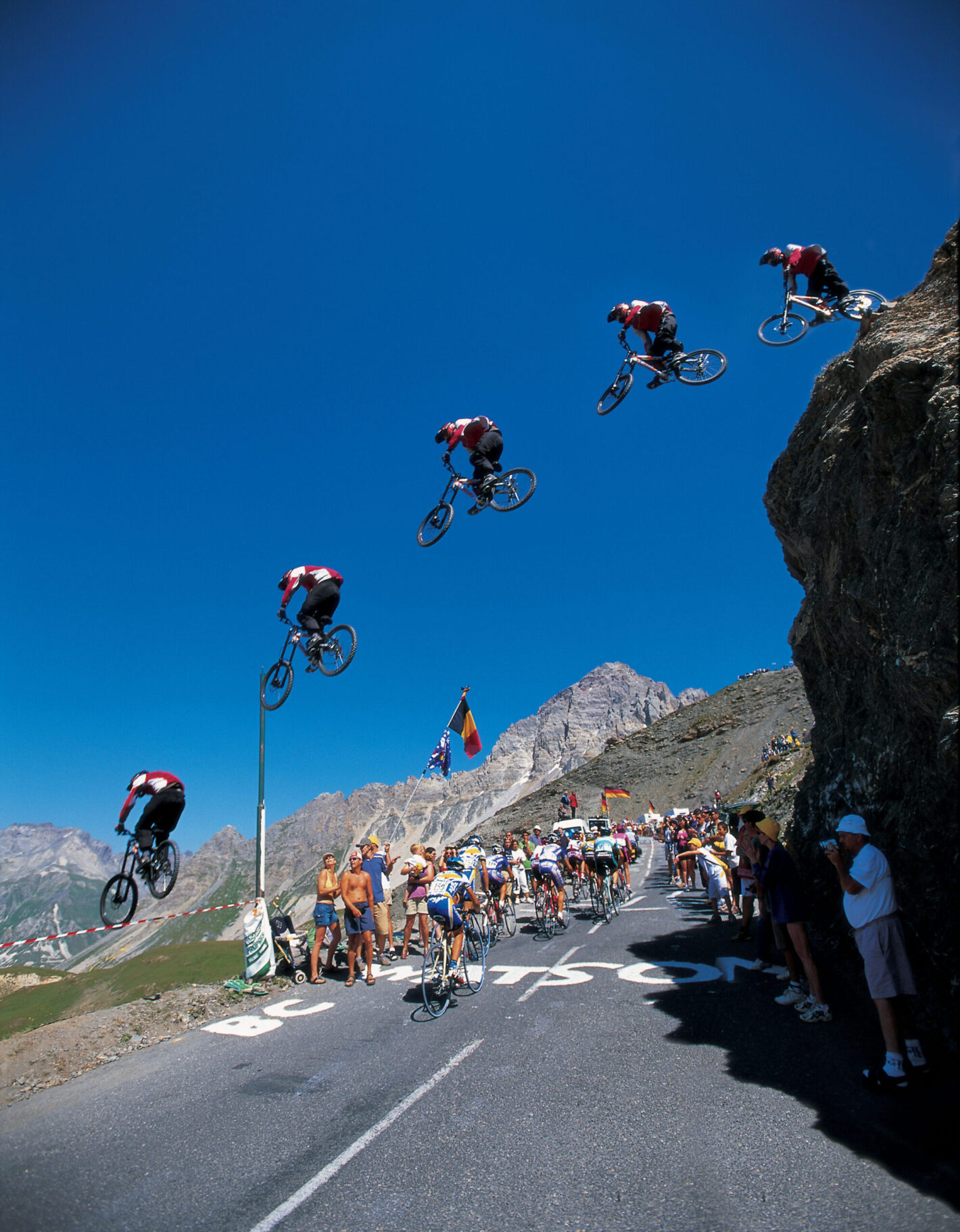
In 2003, Big Bike reached out to me with the idea to get a shot of a freerider jumping the Tour de France on the famous Col du Galibier mountain stage. It was a totally rogue idea. They knew that if it was a French rider and a French photographer the word would probably get out to the organizers and they would shut it down. So, to keep it under wraps, they pushed it to the North Americans.
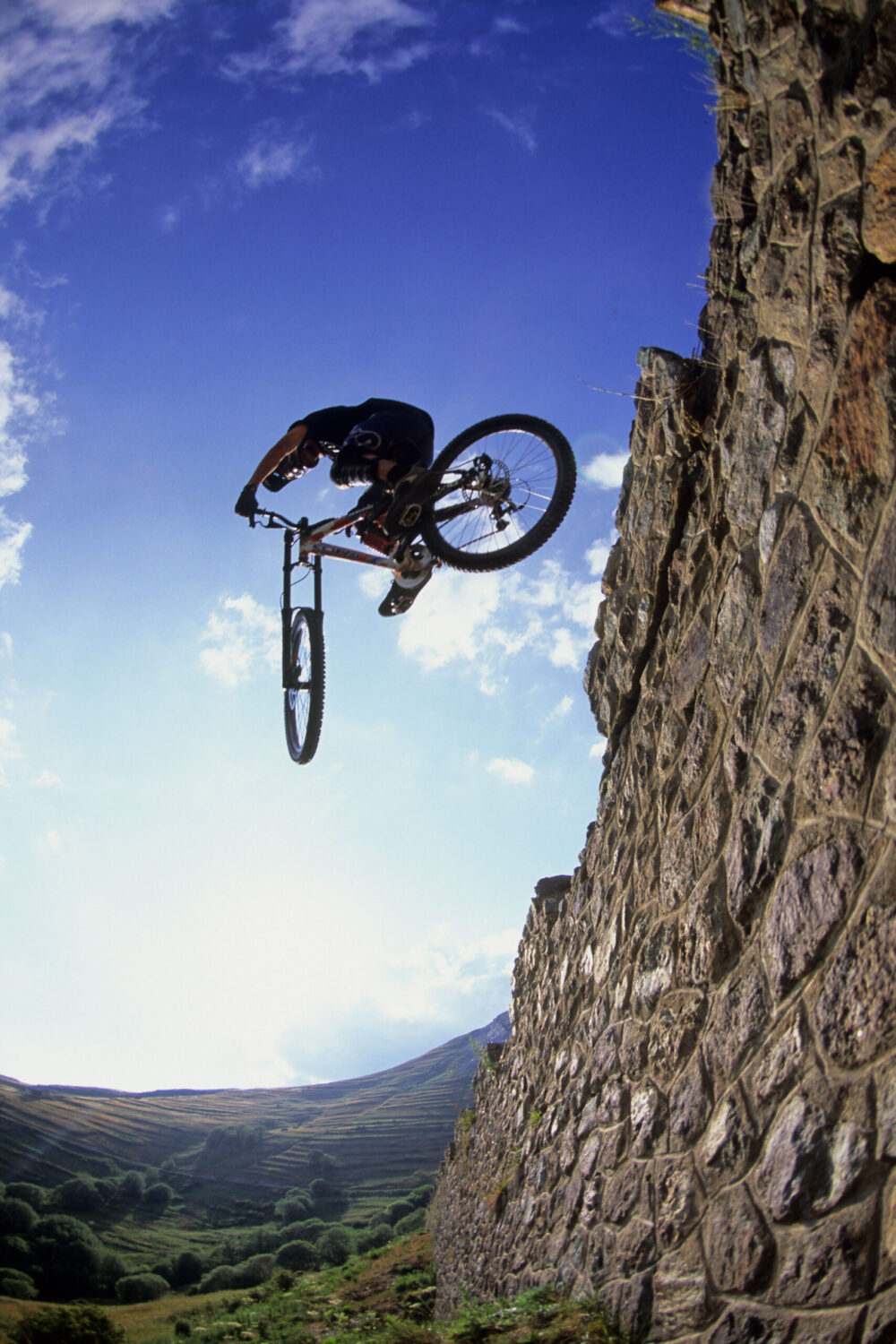
I reached out to Derek Westerlund at Freeride Entertainment, since I knew he would want to film this for his next “New World Disorder” movie, and he lined up Dave Watson from Canada to be the rider. He’s an amazing cyclist. At the time he was a World Cup downhiller known for sending big jumps. He scouted the line and built a kicker off a cliff above the road, but it was still winter and snow covered and he couldn’t hit it. The plan was for him to come back in early summer to practice, but that never materialized.
I told Dave that if he wanted to get some clandestine test jumps in that he’d have to get to France a week or two before the stage. But he got there late, just four days before the stage, and there were campers and fans all over the road. We’d have been busted if he jumped the road at that point. He didn’t even have the chance to do a proper speed check. All we could do was put up some red caution tape on the landing so nobody would stand there.
Race day comes and Dave is like “I’m not sure if this is going to happen.” We have the bike under the tarp. I have two cameras set up on remotes, an assistant with another, as well as one in my hand. Dave has his bike gear on under his street clothes. He’s up on the mountainside.
The Galibier is one of the most famous climbs in cycling. The top GC riders can win or lose the race on the stage. Lance Armstrong and his teammates are at the front of the Yellow Jersey group controlling the race. Behind, the race is breaking up into smaller pelotons. The Lance group rolls through and Dave doesn’t jump. Other groups come through, and still Dave doesn’t jump. I start to think it’s not going to happen. And then finally another group approaches with a good gap between the team car and enough space to pull off the jump. Dave sees them coming and rips off his street clothes.
The plan was for Dave to jump over the back wheels of the last riders in a group, that way if something went horribly wrong, he wouldn’t hit anyone. And then it’s on. Dave yanks the tarp off the bike, drops in, and launches over the road. All my cameras are firing. The jump is almost perfect—whoever was in that first team car must have seen quite the show—but because he never got the chance to speed check the lip, Dave came up half a bike length short on the landing.
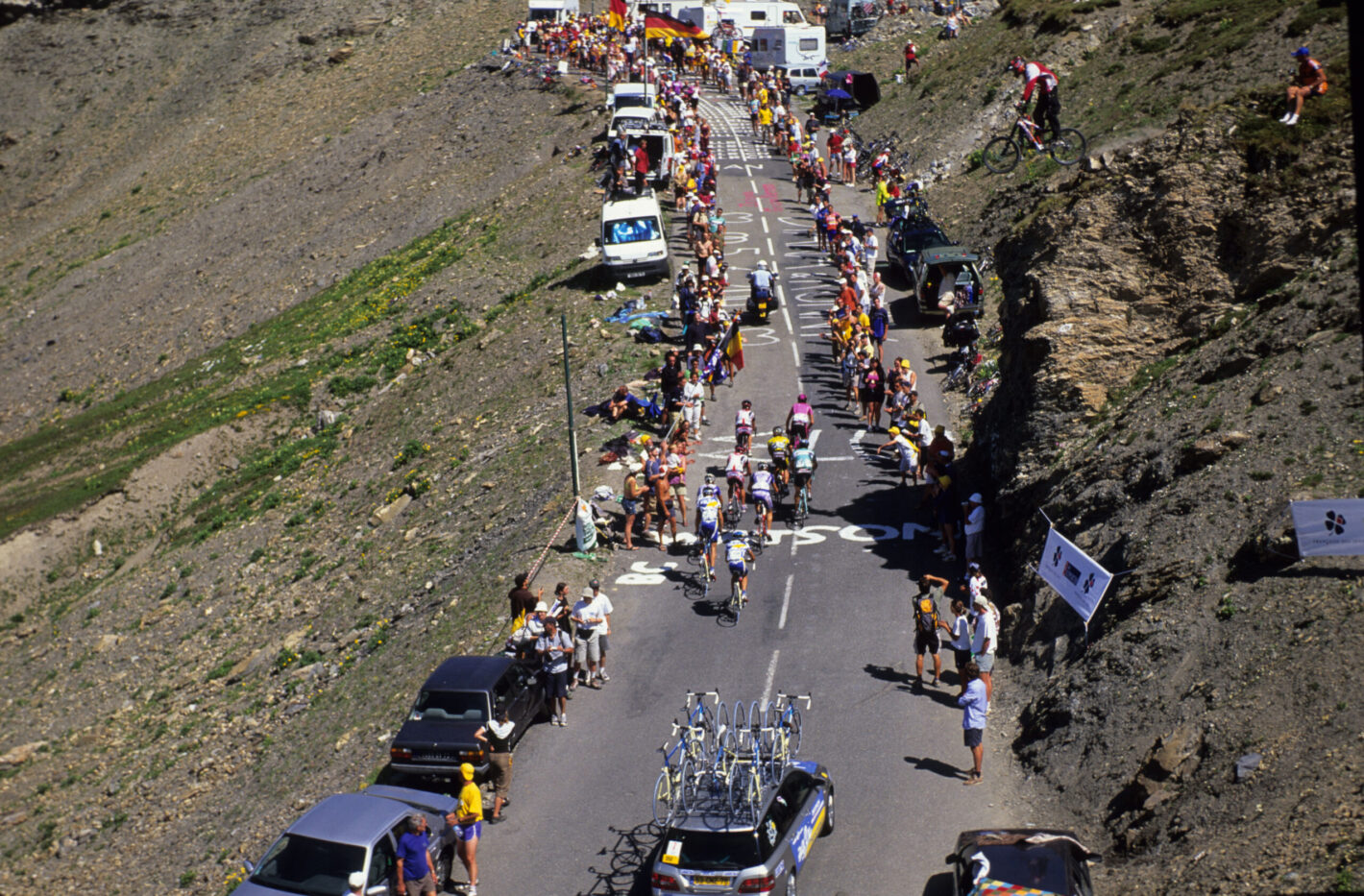
Dave lands on the knuckle after the road gap, which bucks him forward over the bars. His front wheel twists on impact and he catches the handlebar end in his groin before rolling in the dirt. He’s banged up, but OK. A gendarme [uniformed cop] comes running over to him while I’m stashing my camera gear. The race moves on.
The cop brings Dave to a nearby motorhome. Some paramedics arrive to look at him. Trying to be nonchalant, me and the crew take turns checking on him one at a time. We had no idea what was going to happen, and we of course didn’t want to ask the cop, who was now standing in front of the motorhome.
That’s when a full police bus shows up. We’re convinced Dave is going to jail, maybe all of us. But instead of hauling him away, the cop runs over, jumps in the bus and they all leave. That was it. Because it was France and he didn’t hurt anyone, the attitude was no harm no foul. That’s the French way. In the U.S., the FBI would have been after us.
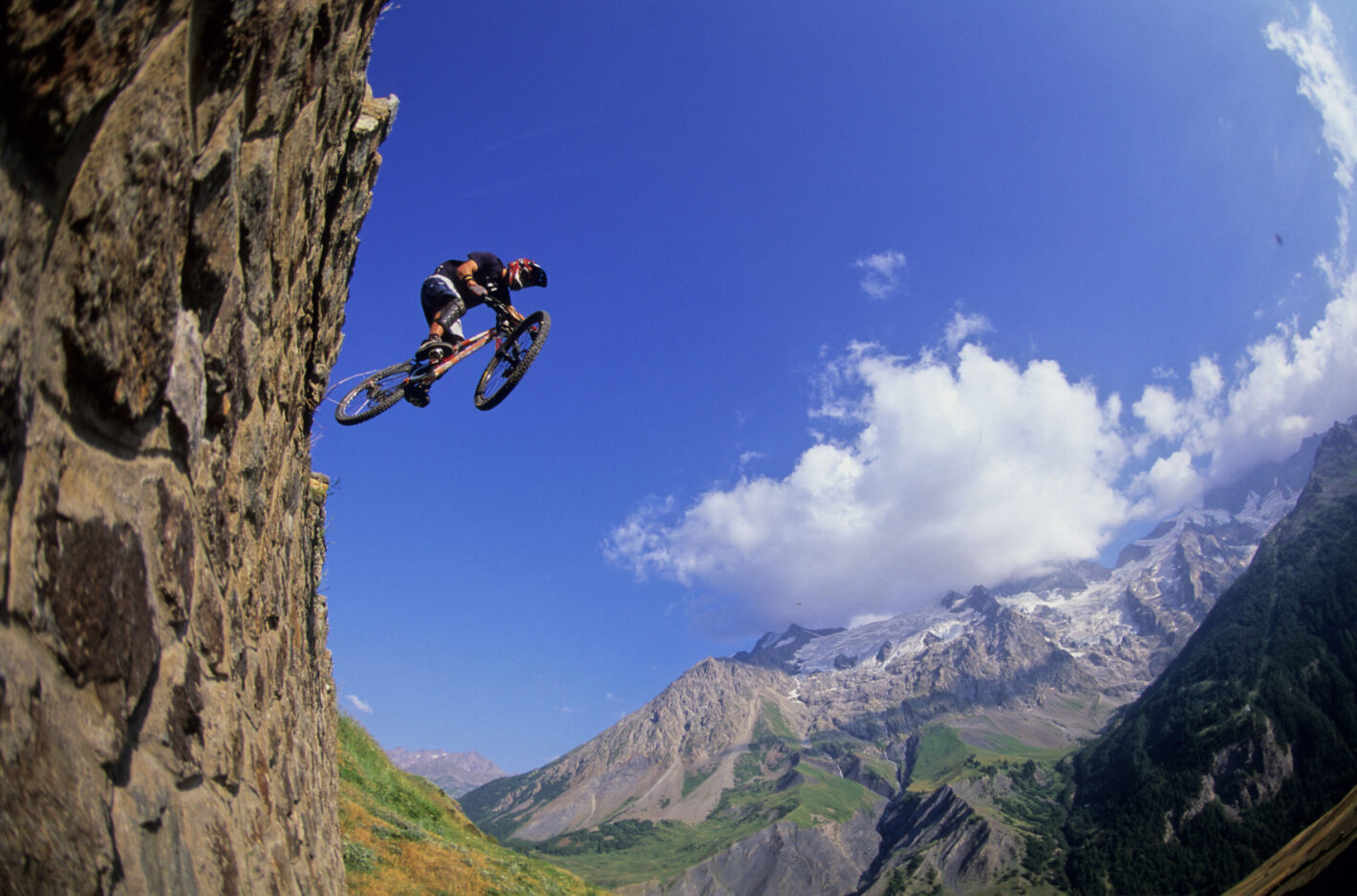
Word immediately got out about the jump. Sports Illustrated learned I had captured it and they sent a courier to pick up the rolls of film and fly them back to New York. It was quite the process back then. The shots ran in S.I. a week later, and on the cover of Big Bike. All told, the images were picked up by more than 20 outlets.
Today, jumping the Tour is a thing. It’s organized and sanctioned by Tour officials. It’s great marketing. Of all the foreseeable outcomes from that day, that was not one of them. I got a few requests for those shots last summer for the 20th anniversary. But I never did hear from the Tour de France.

